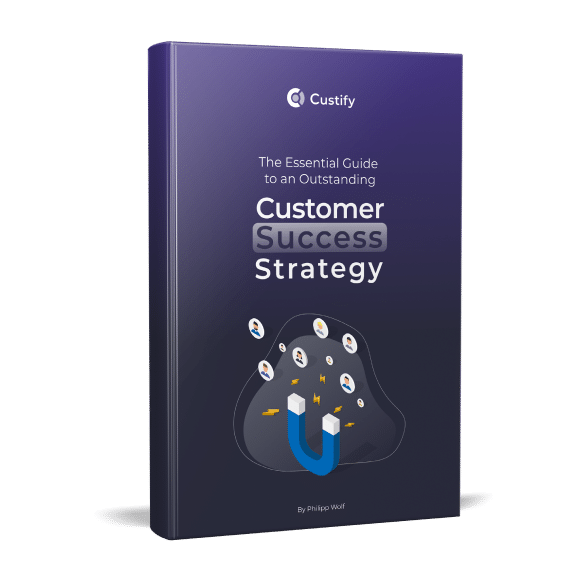Did you know that 82% of customers stay loyal after a positive service interaction? Yet, only a fraction of businesses leverage the tools that make this possible. Customer satisfaction is no longer a mere metric in today’s competitive landscape. It is the cornerstone of sustainable growth and brand loyalty.
Empowered customers, those who feel supported and valued, are more likely to stay loyal, recommend your business, and contribute to its success. Achieving this level of customer engagement requires more than reactive support. It demands a proactive, strategic approach to managing relationships and addressing needs.
This is where customer communication management software becomes indispensable. By leveraging advanced tools to streamline communication, automate workflows, and provide actionable insights, businesses can elevate their support strategies to new heights.
In this article, we will explore how effective support strategies, coupled with robust communication management software, can transform the customer experience and foster long-term loyalty.

Key Strategies for Effective Customer Support
Providing exceptional customer support is essential for building trust, loyalty, and long-term success. Effective support goes beyond resolving issues. It involves proactive engagement, personalized interactions, and seamless communication across all touchpoints.
Here are key strategies to enhance customer support and create a positive experience:
1. Personalized Interactions
Every customer is unique, and tailoring your approach to their specific needs and preferences can significantly enhance their experience.
- Use Customer Data: Leverage customer success software to access detailed profiles, purchase histories, and interaction logs.
- Customize Responses: Avoid generic replies by addressing individual concerns with relevant solutions and empathy.
- Segment Customers: Group customers by behavior, usage, or demographics to deliver targeted support.
Example: A SaaS company segmented its customers by feature usage and saw a 20% increase in satisfaction by personalizing onboarding emails with use-case-specific tips. - Integrate Tools: Consider platforms like HubSpot or Intercom to act on customer insights seamlessly.
2. Proactive Engagement
Waiting for customers to reach out with problems can result in frustration and lost opportunities. Instead, anticipate their needs and take the initiative.
- Monitor Health Scores: Use customer success tools to track engagement and identify early signs of dissatisfaction.
- Preempt Issues: Send reminders, updates, or solutions before customers encounter problems.
Example: A subscription box company reduced churn by 20% by sending personalized reminders before subscription renewals. - Celebrate Milestones: Recognize customer achievements, such as anniversaries or usage milestones, to build stronger relationships.
3. Streamlined Communication Channels
Offering multiple ways for customers to reach you ensures convenience and accessibility.
- Multi-Channel Support: Provide options like email, live chat, phone, and social media for customer interactions.
- Unified Dashboard: Use communication management software to centralize all channels, ensuring a consistent experience.
- 24/7 Availability: Implement chatbots or AI-powered solutions for round-the-clock assistance.
Example: Zendesk or Custify centralizes communication across channels, ensuring seamless customer experiences and request oversight.
4. Feedback Loops for Continuous Improvement
Customer feedback is a goldmine for refining your support processes and addressing pain points.
- Surveys and Polls: Regularly collect feedback on your service quality and product performance.
- Analyze Trends: Use reporting tools to identify common issues and improve processes.
- Act on Feedback: Demonstrate that customer opinions matter by implementing suggested changes.
5. Empowering Self-Service Options
Many customers prefer solving issues on their own if given the right tools.
- Knowledge Bases: Create comprehensive libraries of FAQs, tutorials, and guides.
- Community Forums: Foster a space for customers to share insights and solutions.
- AI Assistants: Offer intelligent search tools to help customers find answers quickly.
Example: Netflix asks new users to select three favorite shows during signup, using that feedback to deliver personalized recommendations.

By implementing these strategies and leveraging customer communication management software, businesses can enhance the support experience, reduce churn, and foster lasting customer relationships. Effective support is not just about resolving issues. Rather, it is about building trust and ensuring customers feel valued every step of the way.
The Role of Customer Success Software
Customer success software is a powerful tool that helps businesses manage relationships. By focusing on proactive customer engagement, companies are able to improve retention and drive growth. These platforms enable organizations to streamline processes, gain actionable insights, and ensure customers achieve their desired outcomes.
Emerging trends such as AI and machine learning are further enhancing these platforms. For instance, AI-powered health scoring identifies at-risk customers, while NLP-based analytics provide actionable insights from support tickets.
What is Customer Success Software?
Customer success software is designed to help businesses monitor customer health, track interactions, and automate workflows. It serves as a central hub for managing customer data, identifying risks, and spotting opportunities for upselling or cross-selling.
Key features typically include:
- Customer Health Scoring: Analyze usage patterns and engagement metrics to identify satisfied customers and those at risk of churn.
- Automated Workflows: Streamline repetitive tasks like onboarding, follow-ups, and renewals to free up time for more strategic efforts.
- Segmentation Tools: Group customers based on behavior, preferences, or demographics to deliver targeted support and communication.
- Analytics and Reporting: Provide insights into customer trends, satisfaction levels, and overall success metrics.
Benefits of Customer Success Software
- Proactive Problem Solving: By monitoring customer health and engagement, businesses can address issues before they escalate, reducing churn rates.
- Enhanced Personalization: The software enables tailored support and communication based on individual customer needs, fostering loyalty.
- Time and Cost Efficiency: Automating routine tasks allows teams to focus on strategic initiatives, improving productivity and reducing operational costs.
- Data-Driven Decisions: Robust analytics provide actionable insights, helping businesses refine their strategies and prioritize high-impact activities.

Real-World Applications
- Onboarding Made Easy: Streamline the onboarding process with step-by-step guides and automated check-ins, ensuring customers quickly realize value.
- Churn Prediction: Use health scores to identify customers at risk and implement targeted retention strategies.
- Upselling Opportunities: Analyze customer data to recommend relevant upgrades or additional services.
Maximizing the Impact of Customer Success Software
To fully leverage customer communication management software:
- Integrate it with existing tools like CRMs or support platforms for seamless data sharing.
- Train teams to use its features effectively and consistently.
- Regularly review and update strategies based on the insights and trends identified by the software.
Customer success software is more than a tool. It is a strategic asset for empowering customers and driving business growth. By investing in the right platform and using it effectively, businesses can enhance customer experiences, build stronger relationships, and secure long-term success.
Best Practices for Implementing Customer Success Software
Integrating customer communication management software into your workflows can revolutionize how you manage customer relationships and drive business outcomes. A McKinsey study found that experience-led growth can increase cross-selling by 15-25%, boost market share by 5-10%, and improve customer satisfaction and engagement by 20-30%.
Here’s how to ensure a seamless implementation and leverage the software effectively:
1. Steps for seamless integration
- Assess Current Workflows: Begin by identifying gaps in your current processes and determine how the software can address these needs.
- Collaborate with IT and Stakeholders: Engage your IT team and key stakeholders early to ensure compatibility with existing systems and gather input on features that align with team goals.
- Leverage Vendor Support: Many platforms, like Custify, offer concierge onboarding to simplify the process, reducing integration time significantly. For example, Custify users have reported completing setup in under a day, minimizing disruption to daily operations.
- Custify users report saving 10+ hours weekly on routine tasks after seamless integration with CRMs.
2. Training staff to maximize capabilities
- Comprehensive Training Programs: Ensure all team members are familiar with the software’s features, focusing on tools like health scores, automated task management, and customer segmentation.
- Hands-On Practice: Encourage employees to practice real-world scenarios to build confidence in using the software.
- Ongoing Learning: Offer regular workshops or access to updated training materials as the software evolves.
- Cross-team workshops ensure alignment across marketing, sales, and support teams.
3. Regularly reviewing and updating strategies
- Leverage Analytics: Use the software’s insights to track customer behavior, measure engagement, and identify trends. Custify’s dynamic dashboards, for instance, help teams spot upsell opportunities and proactively address potential churn risks.
- Tracking health scores in Custify helped companies improve tool adoption by 15%.
- Iterative Improvements: Update customer success strategies based on the data. For example, tracking health scores in Custify has enabled companies to improve tool adoption rates and focus on enhancing customer experiences.
- Feedback Loops: Regularly collect feedback from your team and customers to refine processes and ensure the software continues to meet evolving needs.

Case Studies: Custify in Action
- Reducing Churn: A SaaS company using Custify reduced customer churn by implementing proactive engagement strategies based on health scores and automated reminders. This streamlined approach allowed teams to focus on high-priority accounts without increasing headcount.
- Boosting Customer Loyalty: Another firm reported a 25-35% monthly increase in upsell revenue after integrating Custify. The platform’s detailed insights empowered their customer success managers to personalize interactions and foster stronger relationships.
- Improving Productivity: By consolidating scattered customer data into a centralized hub, Custify’s customer success software enabled teams to save time and enhance collaboration, leading to faster responses and improved client satisfaction.
In Conclusion
Customer communication management software isn’t just a tool—it’s the foundation of scalable, customer-centric growth. By implementing proactive strategies, leveraging insights, and fostering personalized interactions, businesses can not only meet but exceed customer expectations.
Platforms like Custify enable teams to work smarter, delivering measurable outcomes and cultivating trust. As customer success continues to evolve, those who invest in the right tools and strategies will lead the way, turning every interaction into an opportunity for growth.
It’s time to elevate your support game—are you ready to build stronger, more loyal customer relationships?




